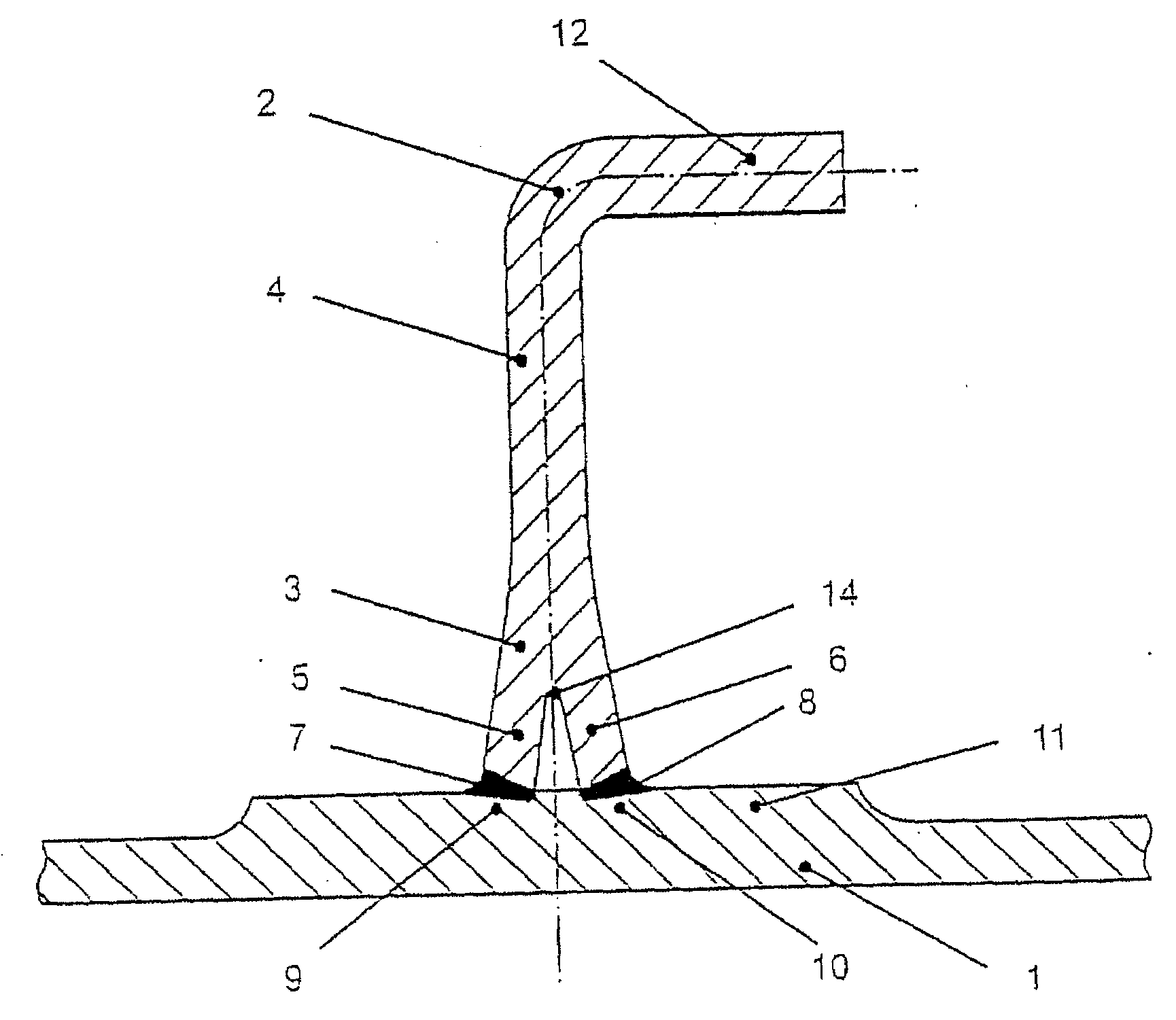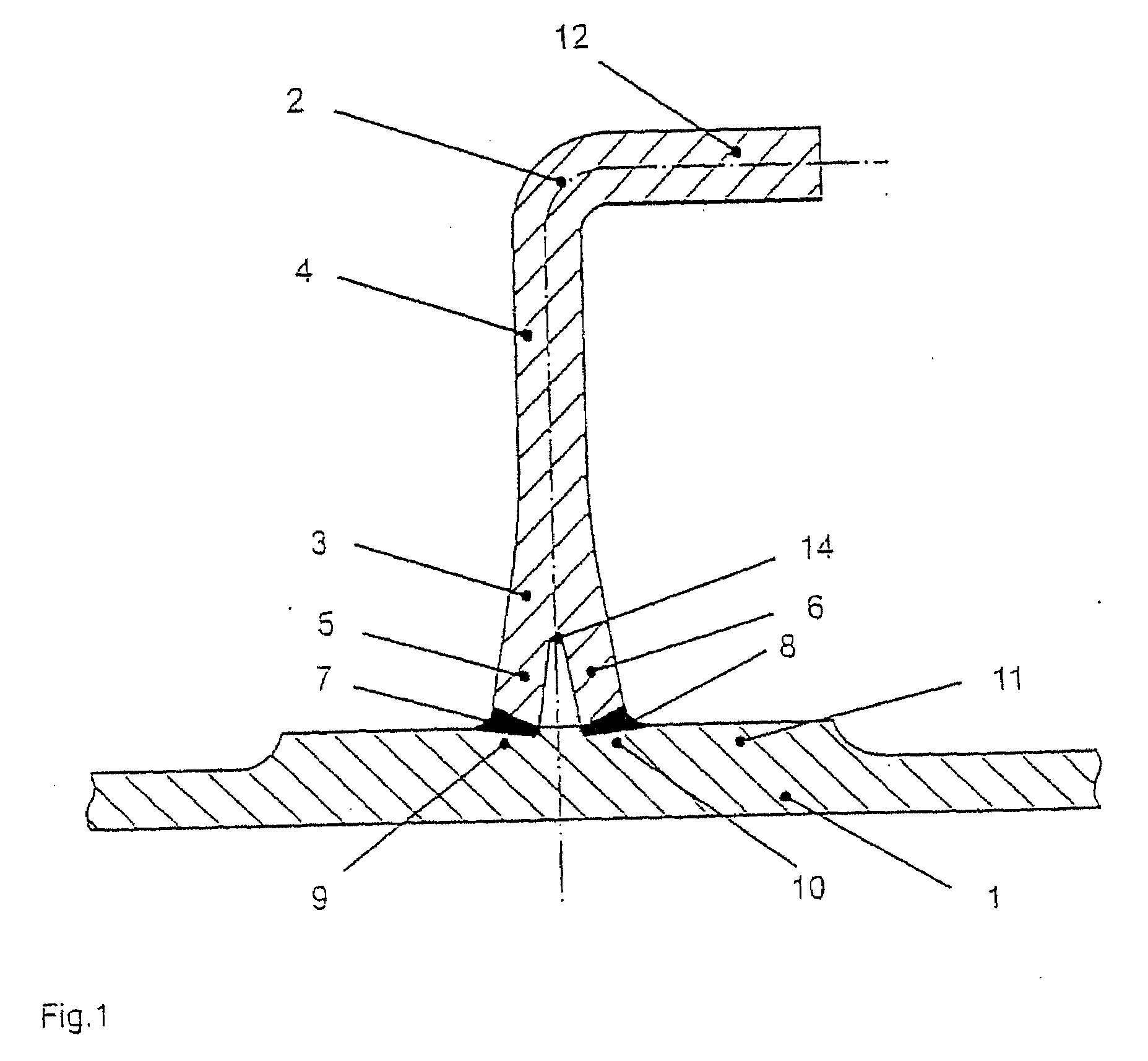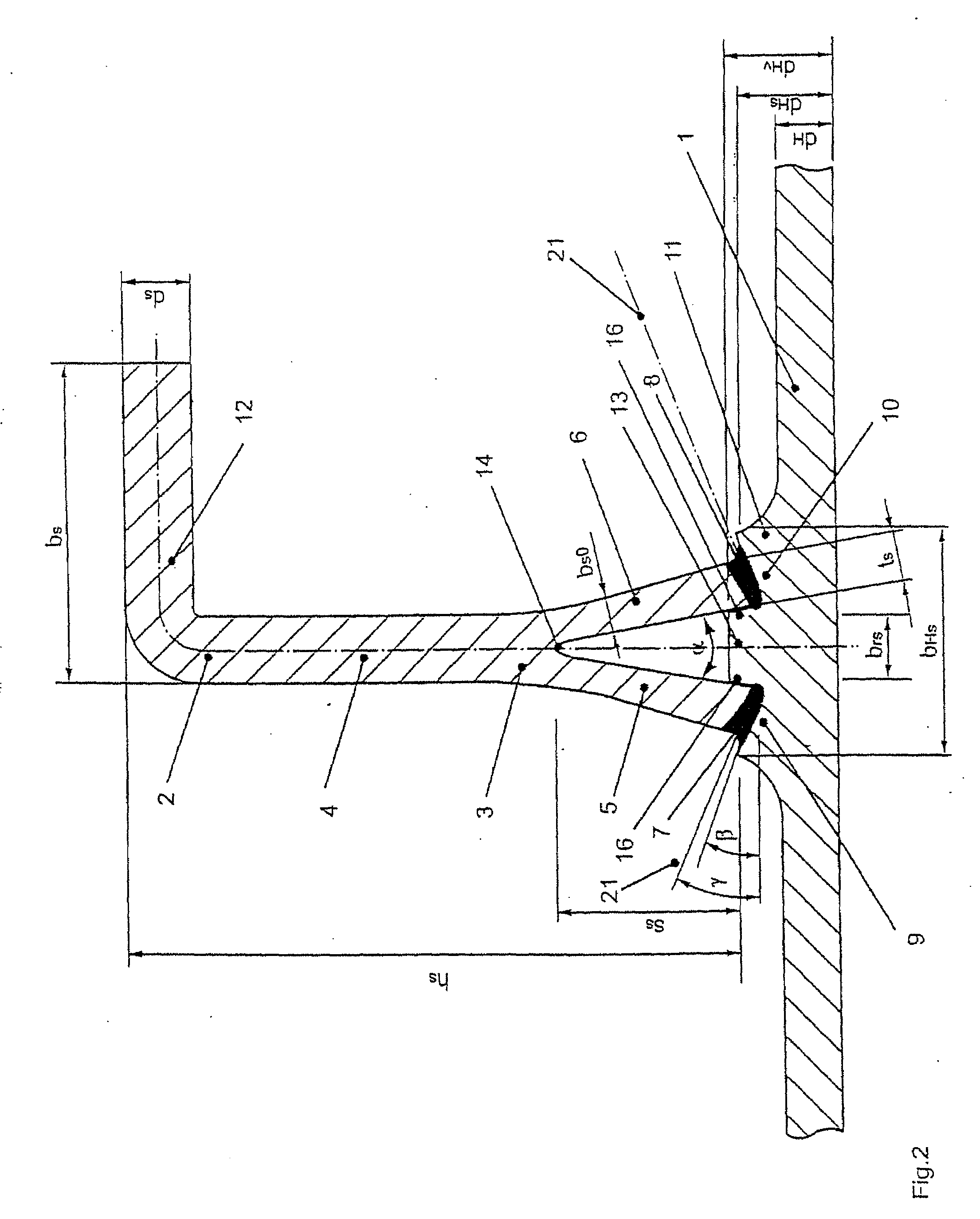Lightweight structural component in particular for aircraft and method for its production
a technology for aircraft and structural components, applied in the direction of manufacturing tools, non-electric welding apparatuses, transportation and packaging, etc., can solve the problems of high cost of differential structure production, complex structure of stress panel/stiffening element, etc., to achieve effective and low-cost production and improve damage tolerance
- Summary
- Abstract
- Description
- Claims
- Application Information
AI Technical Summary
Benefits of technology
Problems solved by technology
Method used
Image
Examples
example 1
[0124]The lower fuselage of an aircraft is to be embodied with a higher dent resistance and an improved stiffness. At the same time, production costs and weight are to be reduced. To this end, a riveted construction is replaced by a laser beam-welded construction in a configuration according to the invention, as shown in FIG. 1 for the stringer / panel variant.
[0125]The panel 1 includes a panel base 11. A stringer 2 normally embodied with a stringer head 12 and stringer bar 4 features on its side facing the skin sheet 1 two side pieces 5, 6. The lower sides of the two side pieces 5, 6 extend from the stringer foot 3 and run horizontally. In this way, they rest on a level panel base 11. Both side pieces 5, 6 are connected in a material-locking and / or fixedly secured manner to the panel base 11 with two separate joint zones 7, 8. The center-lines of the joints 7, 8 can form an angle of respectively γ=approximately 20° to the surface of the panel base 11 (see FIG. 2). The joint zones 7, ...
example 2
[0135]Further advantages of the invention are to be explained on the basis of a further developed embodiment that leads to a clearly improved damage tolerance behavior. It is particularly suitable for the side fuselage area but also for the upper fuselage area, i.e., for transverse stress and / or tensile stress.
[0136]One preferred geometric embodiment is shown in FIG. 2. In addition to the features specified in exemplary embodiment 1, the panel 1 also features a panel stiffening base 13. The two outer sides 16 of the panel stiffening base 13 are inclined at an angle of approx. a / 2 and are thus adapted to the inner sides of the side pieces 5, 6 that are also inclined at an angle of approx. a / 2 from the symmetric line (i.e., the center line running through stringer bar 4). The joint surfaces 9, 10 of the base 13 and of the two side pieces 5, 6 are inclined at an angle β≧approx. α / 2 with respect to the surface of the panel 1. With a weld seam angle γ≈β, the weld seam thus lies generally...
example 3
[0159]Another variant for improving the damage tolerance of welded panel / stringer connections is explained in FIGS. 10 and 11.
[0160]High tensile stresses prevail in the upper shell area along the weld seams in a stringer / skin connection. They can be reduced by stress relief elements embedded in the panel base parallel to the stringer. In one preferred embodiment they comprise wires of high-strength steel, titanium or Ni materials. Their positive effect regarding damage tolerance is due to two effects: firstly, due to their higher modulus of elasticity they put up a higher resistance to an elongation along the wire axis than the skin material surrounding them or the weld seam, so they relieve the stress on their surroundings. The crack growth rate is thus reduced when the crack approaches the stress relief element and thus the weld seam. Secondly, the residual strength is improved, because the stress relief element still remains intact after the crack has crossed the surroundings of ...
PUM
| Property | Measurement | Unit |
|---|---|---|
| angle | aaaaa | aaaaa |
| angle | aaaaa | aaaaa |
| total angle | aaaaa | aaaaa |
Abstract
Description
Claims
Application Information
 Login to View More
Login to View More - R&D
- Intellectual Property
- Life Sciences
- Materials
- Tech Scout
- Unparalleled Data Quality
- Higher Quality Content
- 60% Fewer Hallucinations
Browse by: Latest US Patents, China's latest patents, Technical Efficacy Thesaurus, Application Domain, Technology Topic, Popular Technical Reports.
© 2025 PatSnap. All rights reserved.Legal|Privacy policy|Modern Slavery Act Transparency Statement|Sitemap|About US| Contact US: help@patsnap.com



